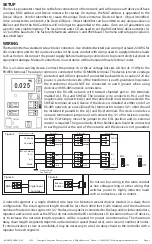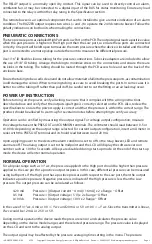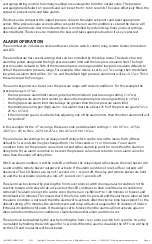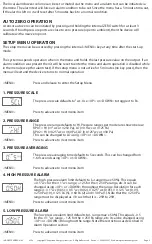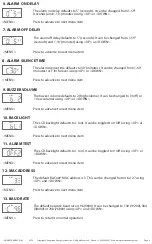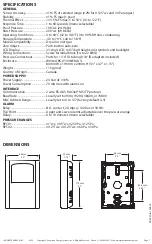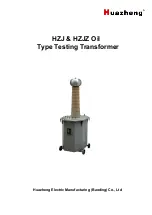
IN-GE-RPCXXXBAC-01-02 03/19
Page 2
Copyright © Greystone Energy Systems, Inc. All Rights Reserved Phone: +1 506 853 3057 Web: www.greystoneenergy.com
SETUP
The device parameters must be set before connection to the network and will ensure each device will have
a unique MAC address and Device Instance for startup. On startup, the MAC address is appended to the
Device Object : Vendor Identifier to create the unique Device Instance (Device Object : Object Identifier).
Once connected to a network, the Device Object : Object Identifier can be written to any unique value via
BACnet and then the MAC address will no longer be appended to the value. Once set, all parameters are
saved in non-volatile memory. The local menu and LCD are used to set the BACnet MAC device address (0-
127) and the baud rate. The factory defaults are address 3 and 9600 baud. The menu and setup procedure is
described later.
WIRING
The transmitter has standard screw block connectors. Use shielded twisted pair wiring of at least 22 AWG for
all connections and do not run device wires in the same conduit with wiring used to supply inductive loads
such as motors. Disconnect the power supply before making any connections to prevent electrical shock or
equipment damage. Make all connections in accordance with national and local electrical codes.
This is a 3-wire sourcing device. Connect the positive dc or the ac voltage hot side (24 Vac/dc ± 10%) to the
POWER terminal. The supply common is connected to the COMMON terminal. The device is reverse voltage
protected and will not operate if connected backwards. Use caution if 24 Vac
power is used and one side of the transformer is earth-grounded. In general,
the transformer should NOT be connected to earth ground when using
devices with RS-485 network connections.
Connect the RS-485 network with twisted shielded pair to the terminals
marked A(-), B(+) and SHIELD. The positive wire connects to B(+) and the
negative wire connects to A(-) and the cable shield must be connected to the
SHIELD terminal on each device. If the device is installed at either end of an
RS-485 network, an end-of-line (EOL) termination resistor (121 ohm) should
be installed in parallel to the A(-) and B(+) terminals. This device includes a
network termination jumper and will connect the 121 ohm resistor correctly
on the PCB. Simply move the jumper to the EOL position and no external
resistor is required. The ground wire of the shielded pair should be connected
to earth ground at the end of the network and the device is not grounded.
Do not run bus wiring in the same conduit
as line voltage wiring or other wiring that
switches power to highly inductive loads
such as contactors, coils or motors.
A network segment is a single shielded wire loop run between several devices (nodes) in a daisy chain
configuration. The total segment length should be less than 4000 feet (1220 meters) and the maximum
number of nodes on one segment is 127. Nodes are any device connected to the loop and include controllers,
repeaters and sensors such as the RP but do not include the EOL terminators. To install more than 127 devices,
or to increase the network length, repeaters will be required for proper communication. The maximum
daisy chain length (segment) depends on transmission speed (baud rate), wire size and number of nodes.
If communication is slow or unreliable, it may be necessary to wire two daisy chains to the controller with a
repeater for each segment.
Figure 5
Figure 6
Digital Input
RELAY
Controller
Building Controller
24 Vac/dc
Common
BACnet® Master
A (-)
B (+)
Shield
Device 01
POWER
COMMON
A (-)
B(+)
SHLD
POWER
COMMON
A (-)
B(+)
SHLD
A (-)
B(+)
SHLD
POWER
COMMON
Device 02
Device 03
Set EOL Jumper
Connect Shield
One End Only
EOL
EOL
ON
OFF
Figure 8
Buzzer -


